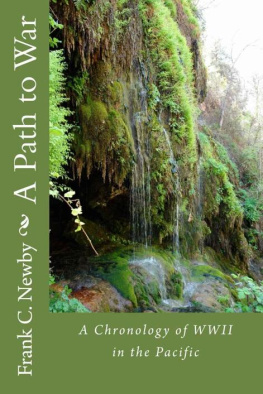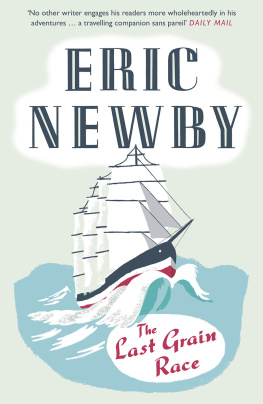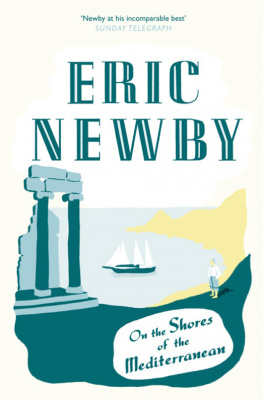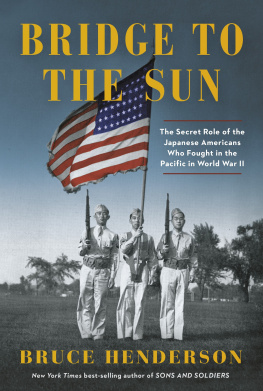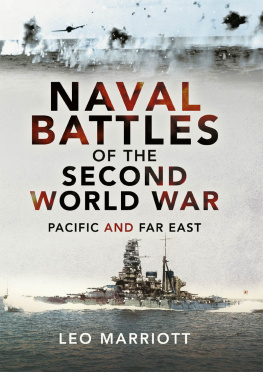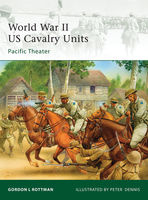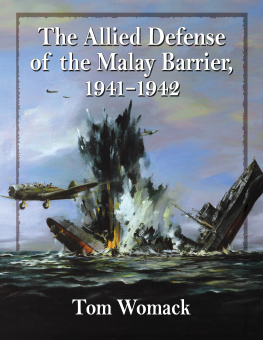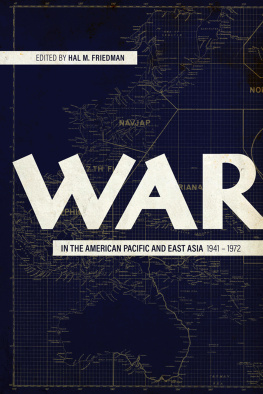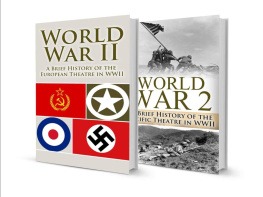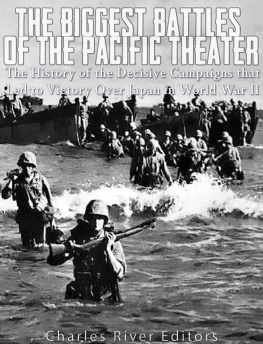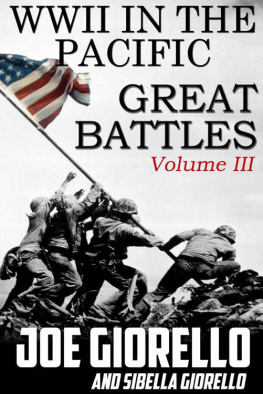A Path to War
A Chronology of WWII in the Pacific
Dedicated to my wife of 64 years and our two sons of whom we are extremely proud.
A Path to War
A Chronology of WWII in the Pacific
Frank C. Newby
Copyright 2014
By
Frank C. Newby
All rights reserved. No part of this book may be reproduced, scanned, or distributed in any printed or electronic form without permission.
First Edition: May 2014
Printed in the United States of America
ISBN: [ISBN number with hyphens
Author Book List
Frank C. Newby
*Jesus: Myth Or Reality? - 2005-2014
The Citadel of Power and Greed - 2006
Decay From Within: Christian Reconstructionists - 2007
*His Name Was Amy Mable- 2008
*Rx for Education: Using Ockham's Razor - 2009
*Evangelism: The Fleecing of the Flock - 2008
Caldron of Anarchy - 2010
Mexico: Drug Merchant to the World- 2011
Banana Republic: The Rape of Central America- 2012
Secrets of the Caribbean - 2012
Beyond The Mormon Veil - 2012
* Medal of Honor: From Antietam to Afghanistan - 2012
*Final Voyage - USS Indianapolis CA-35 - 2013
In the Way - American Indian Wars-Book One - 2013
In The Way - American Indian Wars - Book Two - 2013
*A Path to War: Chronology of WWII in the Pacific-2014
*The Magnificent Flying Machine-PBY Catalina-2014
Amazing Tales - 2014
All books available on Amazon Kindle Readers
*Autographed Soft cover copies at: 575-382-0983 or 575-571-9854 or
Introduction
It has been 72 years since the first shots were fired to signal the beginning of World War in the Pacific or more correctly "The War with Japan." Almost every American if asked when the war in the Pacific started would reply, December 7, 1941 at Pearl Harbor. Technically that would be correct but realistically it started a decade earlier when America went into the great depression. Around the world the repercussions were felt as the greatest country in the "modern world" collapsed. The government of Italy had been weakened by depression leading to unemployment, hunger and desperation and easily fell under the grasp of Benito Mussolini and a government called Fascism which is just another term for dictatorship. He had dreams of expansion to enhance his power and relieve the economic pressures of Italy. He saw the northern coast of Africa as the logical place to expand and the ultimate prize would be the conquest of Egypt. Mussolini promised the Italian people "A place in the sun," which would match the colonial empires of England and France.
The last two decades of the 19th century saw a race among the countries of Europe to divide up the country of Africa. There was a "Scramble for Power" which included England, Germany, France and Italy. The opening of the Suez Canal in 1869 had produced a concerted move for territory to establish coaling stations for the ships of the various countries which would use the canal. Italy managed to secure possession of Somaliland and Eritrea. Their attempt to grab Ethiopia was foiled by outdated equipment, inept leadership and lack of support by the Italian government at that time. Mussolini gained power by promising to seize Ethiopia and return it to Italian control. The acquisition of Ethiopia would give Italy control of practically the entire western coastline of the Suez Canal and the Red Sea. Mussolini was not stupid in his promises. He knew that Ethiopia was militarily weak, with most of its army made up of tribal forces still armed with shields and spears. Its air force at that time consisted of 12 aircraft and they were old and outdated.
We leave Mussolini at the peak of his power as he successfully completed his invasion of Ethiopia and now was engaged in watching carefully the disturbance to his north as Adolph Hitler consolidated his control over Germany and the clouds of war deepened across all of Europe and Africa. He thought he was much more skillful than his cohort in Germany so he formed a coalition with Hitler in the mid 1930s. Mussolini was an egomaniac who considered Hitler's ideas as "simplistic" and "coarse." He was agitated in 1939 when Hitler invaded Poland as he was not yet ready for war. He wanted to wait until at least 1942 when he felt Italy would be ready for a prolonged engagement. Privately he was scornful of Hitler's rants about race and "Aryan supremacy." He was quoted in one speech as expressing pity for the racial views being expressed by the Nazis, "The descendants of those who were illiterate when Rome had Caesar, Virgil and Augustus."
The stage was being set for upheaval of great magnitude as we turn our attention to the North and Adolph Hitler and his Nazi's.
Germany was suffering greatly in the early 1930s as the effects of the great depression in America had spread throughout Europe. Unemployment was rife, hunger was great and inflation was destroying the economy. Germany was ripe for a leader who would offer solutions and relief. A very simplistic and rudimentary approach throughout history, employed by ruthless men as they seek to attain control, is to blame a minority group within the culture. The Jews were scattered throughout Europe and Russia and were frequently used as the culprit for all economic and social ills. Russia had its periodic "pogroms" in which Jewish settlements were raided and many killed by rampaging Cossack armies. The story of the Jew is monumental throughout history as this one race was seemingly marked for destruction. In 1492, King Ferdinand and Queen Isabella had displaced twenty million Jews living in Spain. In the mid 1930's Hitler needed a rallying cry as he rapidly seized control of Germany and established his Nazi regime which assumed total control. His ultimate goal was total domination of all Europe and Russia including the islands of the United Kingdom and the extermination of the Jewish race in Europe. Germany was land bound, and short of strategic materials such as oil and iron. It needed expansion into the Ruhr and other rich mineral and agricultural countries. It needed seaports for commerce and naval dominance. He began his expansion with the seizure of Austria. The union of Germany and Austria had been forbidden by the Treaty of Versailles at the close of World War I. One of the very little known facts is that Germany was constantly bullying and threatening Austria. The German people considered Austria to be a lawful and legal part of Germany and would not accept the fact of it being a separate government. Hitler had been born in Austria and considered it his home country. In 1934 despite the ban by the Versailles Treaty, Hitler massed his forces for an invasion of Austria. Mussolini perceived that Germany might attempt to make this invasion because the government of Austria was in chaos over the murder of their Chancellor, Dollfus, by German thugs. The German Army was met at the Brenner Pass by a massed Italian Army protecting Austria because they had a treaty with Austria which offered their protection. The message was clear and Hitler was not yet ready for war so he backed down and the German troops returned home. This did not last long as Germany and Italy were gradually forming a friendship or at least a working relationship. By the end of 1936, Mussolini had withdrawn his protection of Austria. In early 1937, Mussolini sent a message to Chancellor Schuschnigg that Italy would no longer defend Austria against attack. In February 1938, Hitler sent the Austrian Chancellor a list of ten demands. The chief demand was that a man called Seyss-Inquart should be made Minister of the Interior. This man was a Nazi sympathizer and his appointment would give him control of the Austrian Police forces. Understandably, the Austrian Chancellor refused and announced that he would order a plebiscite (A vote on one question) about whether the people of Austria wanted a free Austria or not. Hitler was furious, not at all sure that the people would vote as he wished, he announced that he would order the immediate invasion of Austria. His statement was that it would be made "in memory of the people of Europe", whatever that was supposed to mean. He made reference to the devastation that had taken place in Guernica, Spain caused by the bombers of the Lutwaffe as they helped in the Spanish Revolution. He threatened to turn Vienna into the "Spain of Austria." Chancellor Schuschnigg could not take the risk of destroying his country so he resigned along with his entire cabinet all except Seyss-Inquart. As the sole remaining member of the Austrian government, he invited the German troops into Austria in March of 1938. On March 15th Hitler entered Vienna in triumph. The people gathered in huge numbers and cheered lustily. Hitler was surprised by the large crowds, it was later reported. The Austrian government was replaced immediately and the Austrian Jews lost all of their civil rights.

